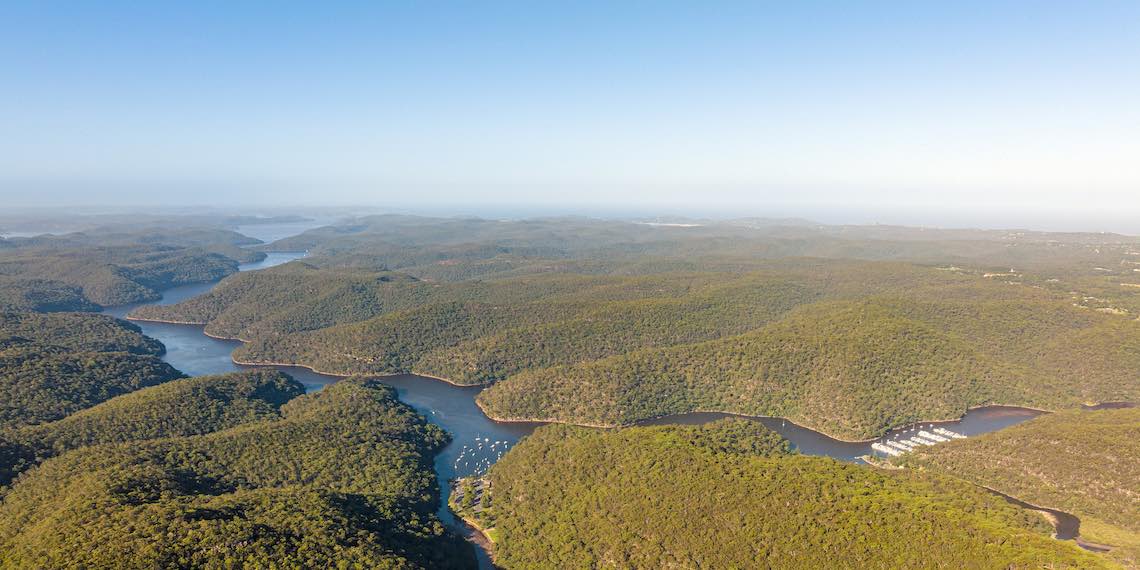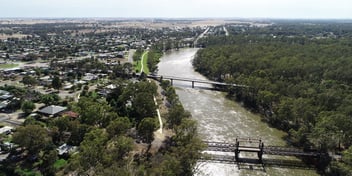Identifying corridors of river recovery for healthier catchments

As rivers along the NSW coast continue to recover from this year’s damaging floods, the results of one new research project could soon provide river managers with direction around how best to prioritise rehabilitative efforts in order to create the most benefit to catchments.
Research from Macquarie University has set out to identify potential corridors of river recovery in coastal NSW with the aim of assisting river management decision-making and investment in effective rehabilitation projects.
Using the Open Access NSW River Styles database, PhD candidate Danelle Agnew’s research identified where extended corridors of river recovery could be created by conservation or rehabilitation, focusing on reaches already showing signs of recovery, and allowing for more effective, catchment-scale rehabilitation.
Agnew said there’s potential for river rehabilitation efforts to become more strategic and evidence-based in terms of working towards creating more effective, catchment-wide benefits.
“River managers have limited resources to spend on river rehabilitation. However, if they focus their efforts on reaches that are linked to poor condition reaches which are not in recovery, the negative impacts from the surrounding poor condition reaches can hinder effective rehabilitation, and result in a poor financial investment outcome,” she said.
“But we can build corridors of recovery connected to healthy reaches, enabling faster and more effective instream and riparian recovery, which potentially generates more critical mass of appropriate geomorphic units and vegetation along these extended corridors.”
Since the 1980s, vegetation has been increasing along coastal rivers in NSW, Agnew said, and the increase in vegetative roughness along these waterways offers up an opportunity to bolster further regeneration.
“Taking a strategic approach to river rehabilitation at a catchment level is all about working with geomorphic recovery that’s already occurring to help bolster rehabilitation efforts and waterway resilience,” she said.
“For example, by focusing on rehabilitating targeted river reaches which are connected on each end by higher recovery potential reaches, we can create longer, healthier fluvial corridors. It’s a better use of resourcing, as it's much more likely for efforts to be effective and provide long-term benefits.”
Prioritising rehabilitation
The results of the study found that there is significant spatial variability in the types and lengths of fluvial connections across NSW catchments. Some catchments show significant potential to build corridors of recovery along large sections of river, while others are more fragmented.
Agnew said this information is of great use to river managers when it comes to making decisions about where to focus on rehabilitative works.
“We created a straightforward workflow for river managers to utilise when making decisions about rehabilitation. We wanted to create something that was very easy to use, even for people that aren’t GIS literate,” she said.
“It assists managers by giving them the first layer of prioritisation – it helps to narrow down the reaches of river that are the most viable in terms of creating catchment-wide benefits.”
Agnew said a lot of information about the characteristics of NSW rivers has been collected in the past two decades through the River Styles Framework, but her research project intended to put that data to use.
“The data regarding river character and condition has been obtained by both remote sensing and field verification, with over 90% ground-truthed by river managers, and is now incorporated into the NSW River Styles database,” she said.
“We have this comprehensive database that we should be fully utilising in a systematic manner. As with any data, there’s no point in collecting it but not using it effectively.”
“River managers will now be able to look at a NSW coastal catchment and, for example, locate all the strategic river reaches that are upstream of high recovery potential reaches, and therefore potentially have good prospects for effective rehabilitation.
“Importantly, it allows river managers to then pursue further investigation into these particular shortlisted river reaches.”
Building resilience
One of the long-term benefits of this type of strategic river corridor recovery is an increase in vegetation, or roughness, Agnew said, which helps rivers to become more resilient to potential knocks and blows, including floods and periods of drought.
“It can take a long time to nurture, but working towards increasing vegetative roughness of river systems helps them to become more resilient,” she said.
“Rivers with more vegetation often also contain a lot more woody debris. This roughness slows down the flow of flood events, generating lower peaks and, in turn, flood events that are potentially less destructive.
“The long-term benefit of increasing vegetation within riparian zones is that we can improve roughness and thus the hydrologic characteristics of rivers. It becomes a nature-based flood mitigation tool.”
Agnew said increased roughness and vegetation in riparian zones and improved hydrology of the waterways themselves leads to improved habitats and ecosystems, and supports biodiversity right across the catchment. However, the downside can be the quality of the revegetation, with weed infestation an issue.
“Over time we have seen improvements in streams where roughness has increased. It also improves the variety of geomorphic units within the streams and, in turn, potentially leads to improved biodiversity. And improved biodiversity is good for the whole catchment,” she said.
“By helping the fluvial corridors to thrive, we are striving to create a healthier catchment. This has all kinds of knock on benefits for the environment and for communities.”
Seeing rivers clearly
Agnew said that one of the key things her research has enabled is more transparency for river managers around areas of river recovery that have particularly high potential, which enables more informed discussion with communities, too.
“River managers tend to use a mix of methods, and need to balance costs and benefits across competing interests when prioritising their rehabilitative efforts,” she said.
“It can be in reaction to a community group that has lobbied for investment in rehabilitation in one particular area of the catchment, or it can be because a company has provided funding as part of their environmental contribution.
“All in all, prioritisation of efforts can be inconsistent, and be focused at the local scale. And sometimes the noisiest people, or the people with the most resources, are better able to influence where river rehabilitation occurs.
“But just because one group or company is noisier, doesn't mean that fixing their part of the river is strategically sound.”
Agnew said her research adds greater transparency to prioritisation, and gives river managers a foundation from which to discuss potential works, at larger scale, with various stakeholders.
“It provides scientific transparency to the prioritisation of rehabilitative efforts. It provides a starting point from which to navigate various stakeholders’ interests and perspectives,” she said.
“And if one group wants an area of a river to be rehabilitated that doesn’t align to a strategically informed plan, then they will really have to argue their case.”

